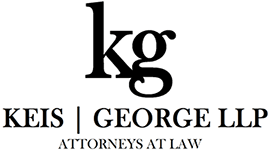What is spoliation of evidence
Spoliation of evidence occurs when an individual or entity with an obligation to preserve evidence does not by means of withholding, changing, constructing, or destroying said evidence. Then there is intentional and negligent spoliation, which we discuss in great length. The difference between negligent and intentional spoliation is the spoliator’s state of mind and whether a sanction in the underlying case would be appropriate.
Here’s a scenario
A fire starts in the bedroom of an insured’s home. Inside the home are a litany of items that may have caused the fire. Your expert performs a cause and origin report and knows it was an electric blanket. The expert retains the blanket and work begins to restore the home. You put the blanket manufacturer on notice and they respond back “spoliation!” Why? What happened? Your expert says they are at fault, what else could be needed?
How to prevent claims of spoliation
There are several reasons why spoliation of evidence is immediately claimed by an adverse party of an insurance carrier. Some of the major reasons can be easily avoided. In the example above, your expert may believe without a doubt that the blanket was at fault. However, without the manufacturer having the opportunity to observe the scene and inspect it themselves, you will run into trouble in litigation. The possibility of evidence being barred or your case being dismissed may be avoided. Here are the easiest ways to avoid spoliation:
- Preserve and secure the scene: Advise the insured and any agents not to disturb the property until a joint examination can be conducted. Retain some way to protect it. Do not release it until it is clear that all parties have been given the opportunity to inspect the scene.
- Set up an inspection quickly: Aside from moving quickly toward restoring the loss location and making the insured happy, this makes it easier to get an inspection done before anything is disturbed.
- Identify any possible party and put them on notice of examination: Even if your expert doesn’t think they are involved, let the potential defendant make that determination.
- Take a lot of photos: If something or someone is missed in the notification, this process will be a fallback to provide an opportunity at investigation. Taking a lot of photos is always a best practice.
- Preserve evidence: If you think an item is involved, keep it. Hold it until any lab or other examination is concluded and all parties have signed off in writing, allowing the evidence to be destroyed.
Avoid spoliation
These are a few but some major examples of ways to prevent any claim of spoliation. The easiest way to avoid spoliation is to get the file assigned to an attorney quickly and hire competent experts. An attorney can work hand in hand with the expert to make sure that any pitfalls are avoided and the case can move forward. That’s why Keis George handles large loss property files with our Early Involvement Strategy. Early Involvement is a strategic, investigative process in which our attorneys use every resource at our disposal in an attempt to recover on your file. The moment a loss is reported to Keis George, our attorneys immediately make preparations to investigate the loss onsite while our paralegals acknowledge and set up the claim. Early Involvement allows Keis George to get in, coordinate, preserve evidence, get notices needed, and retain all the documentation that would be needed to fight back against a later claim of spoliation. To learn more about spoliation or to discuss a file you’re currently working on, contact one of our subrogation lawyers.
